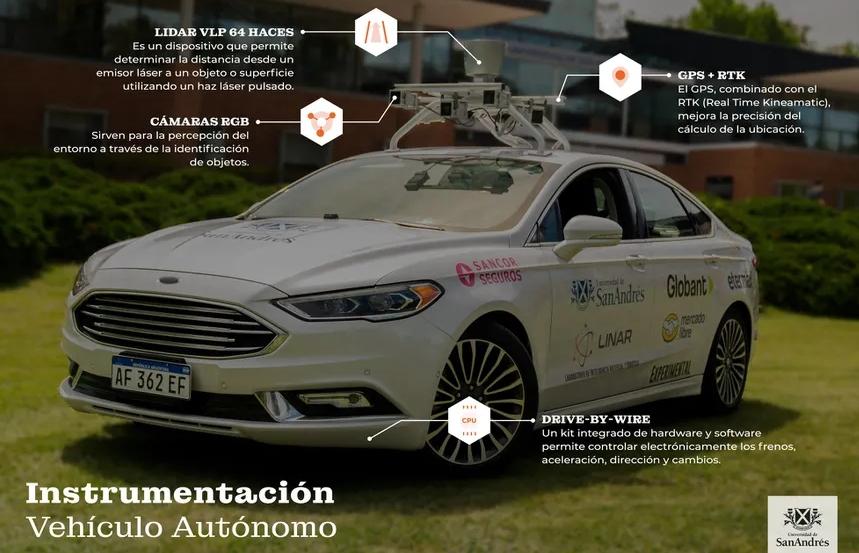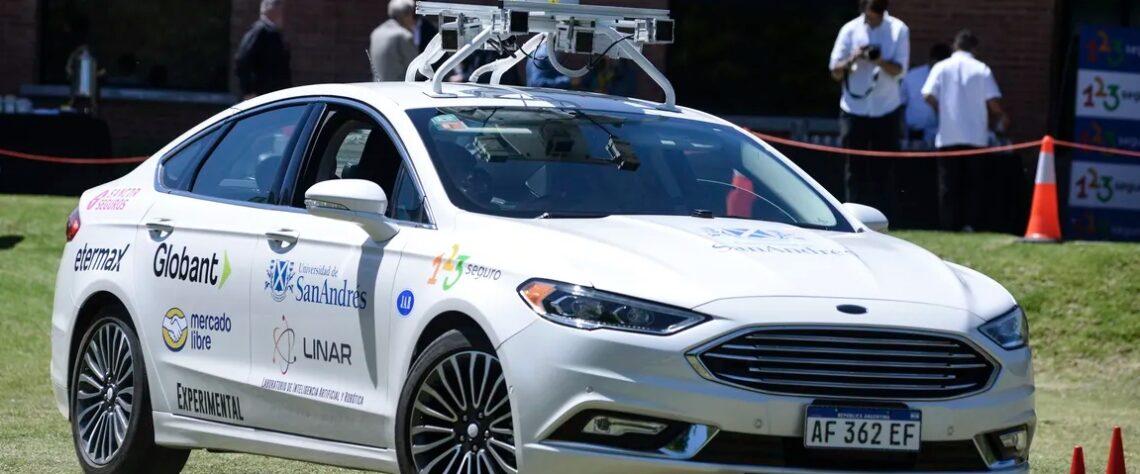The University of San Andrés presented an experimental prototype of the software that allows a car to drive itself
On the campus of the University of San Andrés, the prototype of a car that could reach a certain autonomous circulation in the streets was presented, even at some point not even requiring a driver in command. It is a development based on an imported Ford Fusion Hybrid, which has integrated sensors (lidar, cameras, radar, GPS, computer) to which an interdisciplinary team is developing the “brain” so that at some point ” can make decisions”, explains Ignacio Mas, project leader, and coordinator of LINAR (Laboratory of Artificial Intelligence and Robotics of the University).
The vehicle has a drive-by-wire system that allows computer control of all the car’s commands and has a series of integrated sensors that allow it to perceive the environment and drive through integrated computers.
“Artificial Intelligence is a discipline that is radically transforming industries and the world as we know it,” explained Roberto Bunge, director of the Department of Engineering and director of the Artificial Intelligence Engineering degree, who also lived 10 years in Silicon Valley, the cradle of these developments with which multiple companies are experimenting, such as Tesla, Waymo (from Google) and different automotive companies.

The project, more like a prototype, is in an experimental phase and can only follow a pre-established path.
“The most difficult thing -says Mas- is to design the brain of the car, and that from the information that the sensors take, it can make decisions. What we design here are the algorithms that will be taken into account for that ”, he points out. “The second step is for him to be able to interpret the specific environment of Argentina and the streets. For example, how pedestrians and cars behave, that they do it differently than they do in other places, where these tests are taking place ”, he completes.
What the Linar software platform will do
The autonomous car is the instrument for the development of specific autonomous driving algorithms:
- Location: how does the car identify where it is located. Uses GPS + RTK and existing maps;
- Perception: how does the car, through lidar, radar, cameras and other sensors to perceive the world around it and the objects that move in its environment);
- Planning: how the car plans to get from A to B in the best possible way;
- Control: how does the car execute its plan to move from one point to another, and how does it identify changes in its environment and adapt to them;
- Fault tolerance: what the car does in the event that one of the sensors does not work or something unforeseen arises.
The type of autonomous driving of this prototype is level 2. They are semi-autonomous cars in which steering, acceleration and deceleration maneuvers can be performed by the system, but the monitoring of the driving environment is under human control. There are others that are even more sophisticated, such as the 3 -where it can even overtake another car-, the 4 -it handles itself in the vast majority of situations- and finally total automation, which has not yet arrived anywhere in the world.

The objective of the University is not to commercialize technological development, but rather to “develop knowledge and publish it”, explains Mas. The project is also part of the launch of the Artificial Intelligence Engineering career, the first career of its kind in the country. Roberto Bunge, director of the Department of Engineering and director of the AI degree, explained that the project was born three years ago and that it “seeks to be at the forefront of knowledge.”
In 2016, another similar project had been presented in the country, although not with a “street” vehicle. Enrique Cortés Funes and Alejandro Repetto, from IniPop, presented an electrical prototype developed for the City Government with 3 main sensors, and which worked autonomously; there was no further news about it.

